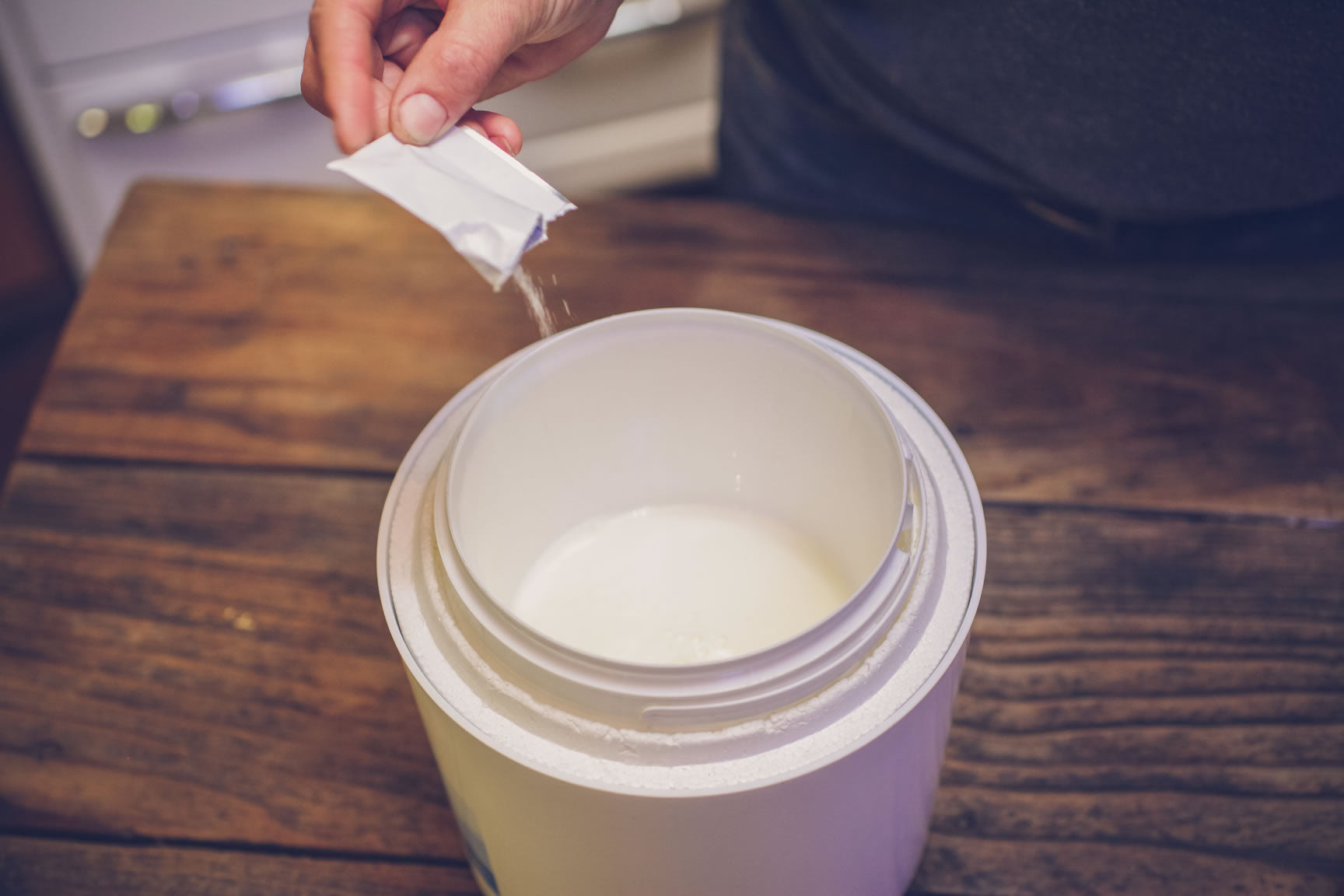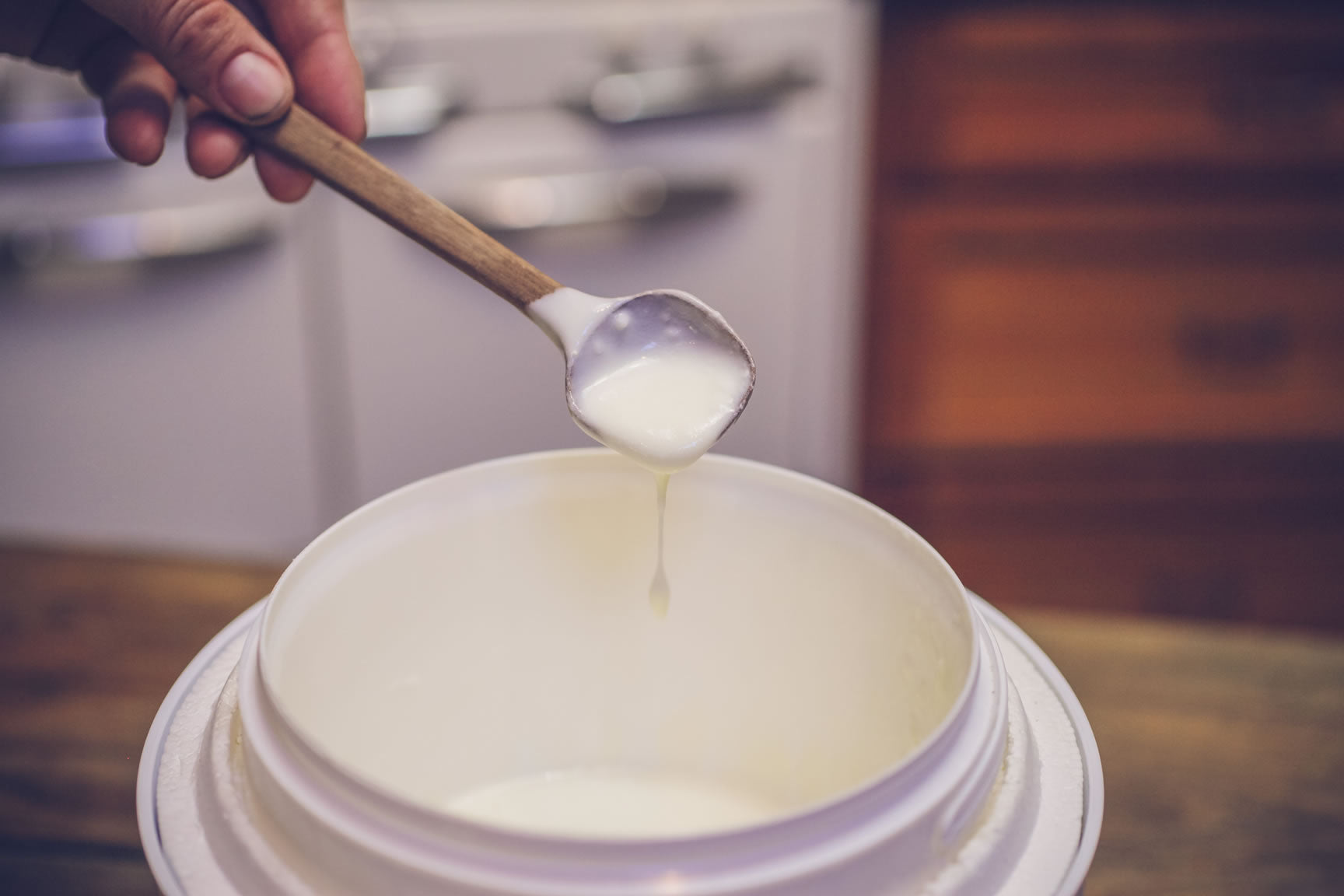- Continue Shopping
- Your Cart is Empty
Homemade Creme Fraìche: Sour Cream in French

What You'll Need
Equipment
- small saucepan
- dairy thermometer
- Yogotherm or other incubator
- storage container
Ingredients
- 1 quart pasteurized Light Cream or Half and Half
- 1 packet Creme Fraìche culture
Creme Fraìche makes whatever it touches fancy. It’s the cultured French cousin of sour cream, a rich and luscious topping for everything from baked vegetables, to pancakes, to soups, to tacos, and beyond.
Often people wonder what the real difference is between sour cream and Creme Fraìche. The differences are subtle, but worth noting, though they are most apparent when considering store-bought products vs homemade. While they are both dairy ferments ostensibly made from cream, their final textures and properties can vary.
Traditionally, in France, where Creme Fraìche hails from, full-fat cream was left unpasteurized, allowing the lactic acid bacteria that occur naturally in milk to work on the cream at room temperature. The result of this “wild” fermentation was a thickened cream that was used primarily as topping for sweet and savory dishes, or as an ingredient in soup. In the United States, Creme Fraìche is most often made with the more readily made pasteurized cream. Pasteurization involves heating the milk to high temperatures for a short amount of time, killing off the native bacteria and making a more shelf-stable product. In this case, the lactic acid bacteria are introduced to the cream in the form of a freeze-dried powder, as we do in the recipe that follows.
Sour cream, while it hails from similar circumstances and undergoes a very similar fermentation process, is now most often made with a blend of both cream and milk, and the addition of a similar, but not identical, bacterial inoculant. To approximate the thickness of whole cream, additional ingredients are sometimes added; gelatin, rennet, powdered milk, or pectin, to name a few. This creates a product that is tangier, slightly thinner, and lower in fat than Creme Fraìche. Sour cream purchased from the store has a fat content of about 20%, while Creme Fraìche has a fat content of about 30%. (the exact proportion depends on the richness of the original cream and milk, which may, in turn, be dependent on the breed and diet of the cows, as well as the time of year.) Creme Fraìche tends to be slightly thicker, with a richer flavor, and a slightly sweeter and less tangy flavor.
Sour cream tends to curdle when used in cooking, because of its slightly higher protein and acidity, so Creme Fraìche is the better choice if the recipe calls for the cultured cream to be simmered or boiled. However, if it is just stirred into a soup or sauce once it is off the heat, this is not as much of a concern. It’s really a matter of taste, and if you are making your own at home, you can control for some of the more undesirable ingredients that are sometimes found in sour cream by culturing full fat cream and omitting the thickening agents. In that case, the primary difference becomes the sweeter richness of Creme Fraìche vs the tanginess of sour cream. And even this is possible to tweak by adjusting fermentation times.
Creme Fraìche is usually fermented at warm room temperature (about 72° F) for 12 hours, however, sour cream can be fermented under the same conditions for up to 24 hours. The longer the cream ferments, the tangier it becomes, as the milk sugars, aka lactose, are broken down by the lactic acid bacteria. This accounts for much of the difference in their tastes; the sweetness and richness of Creme Fraìche are in large part due to a shorter fermentation time that leaves more of the milk sugar remaining in the cultured cream.
While the instructions and photographs below are specifically for Creme Fraìche, they may also be used to make sour cream, bearing in mind the possibility of longer fermentation time.
Directions
Heat the cream gently to 86° F, in a non-reactive saucepan.
Sprinkle the culture over the surface of the warm cream and allow it to rehydrate for 2 minutes.
Stir to dissolve the culture with a top to bottom motion.
Place the cream in a warm location. An insulated container such as a Yogotherm is best.
Cover and let set at 72° F for 12 hours, or until thickened. (If making sour cream, allow it to sit longer, up to 24 hours, or until desired tanginess is reached.)
Store in the refrigerator.
Creme Fraiche can be blended with a small amount of honey to make a luscious topping for desserts.

Over to You
It’s part of our mission here at Mountain Feed to help you make delicious, sustainable, homemade food more often. Stop by and say hello on Facebook, Twitter, Instagram or Pinterest. Or, as always, you can do it the old fashioned way and come by the store to speak with one of our in-house experts.
